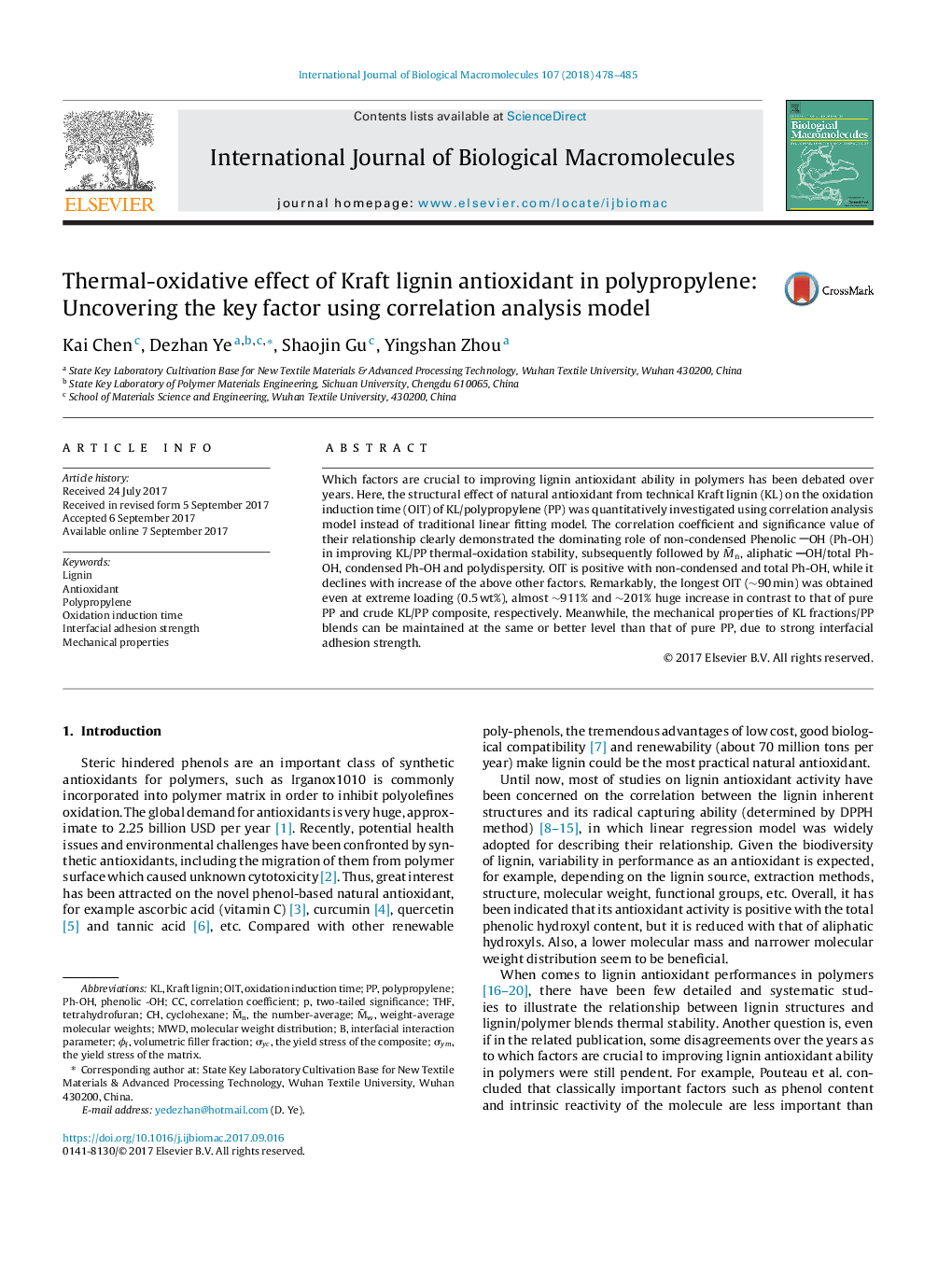| Article ID | Journal | Published Year | Pages | File Type |
|---|---|---|---|---|
| 8329020 | International Journal of Biological Macromolecules | 2018 | 8 Pages |
Abstract
Which factors are crucial to improving lignin antioxidant ability in polymers has been debated over years. Here, the structural effect of natural antioxidant from technical Kraft lignin (KL) on the oxidation induction time (OIT) of KL/polypropylene (PP) was quantitatively investigated using correlation analysis model instead of traditional linear fitting model. The correlation coefficient and significance value of their relationship clearly demonstrated the dominating role of non-condensed Phenolic OH (Ph-OH) in improving KL/PP thermal-oxidation stability, subsequently followed by M¯n, aliphatic OH/total Ph-OH, condensed Ph-OH and polydispersity. OIT is positive with non-condensed and total Ph-OH, while it declines with increase of the above other factors. Remarkably, the longest OIT (â¼90 min) was obtained even at extreme loading (0.5 wt%), almost â¼911% and â¼201% huge increase in contrast to that of pure PP and crude KL/PP composite, respectively. Meanwhile, the mechanical properties of KL fractions/PP blends can be maintained at the same or better level than that of pure PP, due to strong interfacial adhesion strength.
Keywords
Related Topics
Life Sciences
Biochemistry, Genetics and Molecular Biology
Biochemistry
Authors
Kai Chen, Dezhan Ye, Shaojin Gu, Yingshan Zhou,
